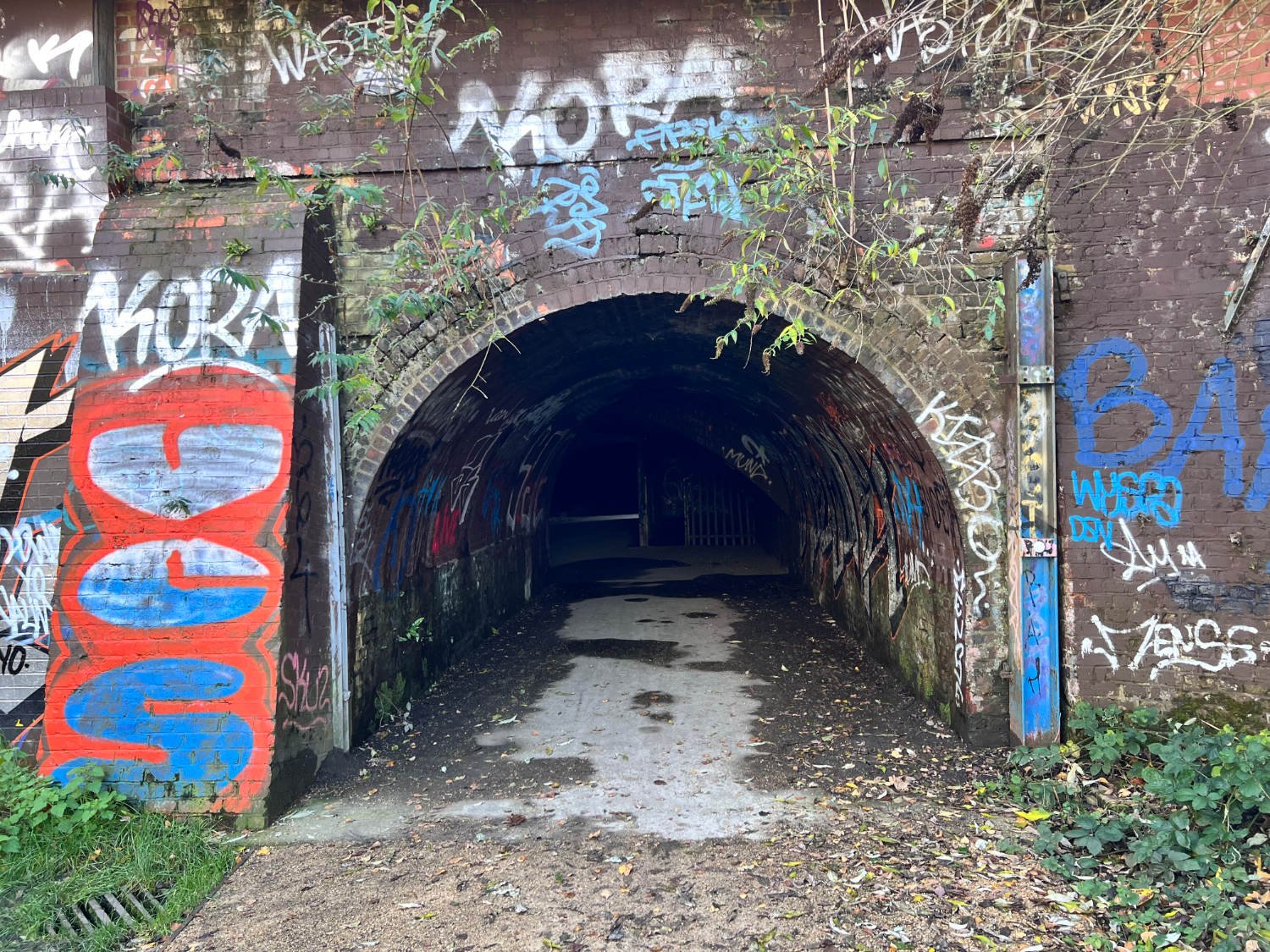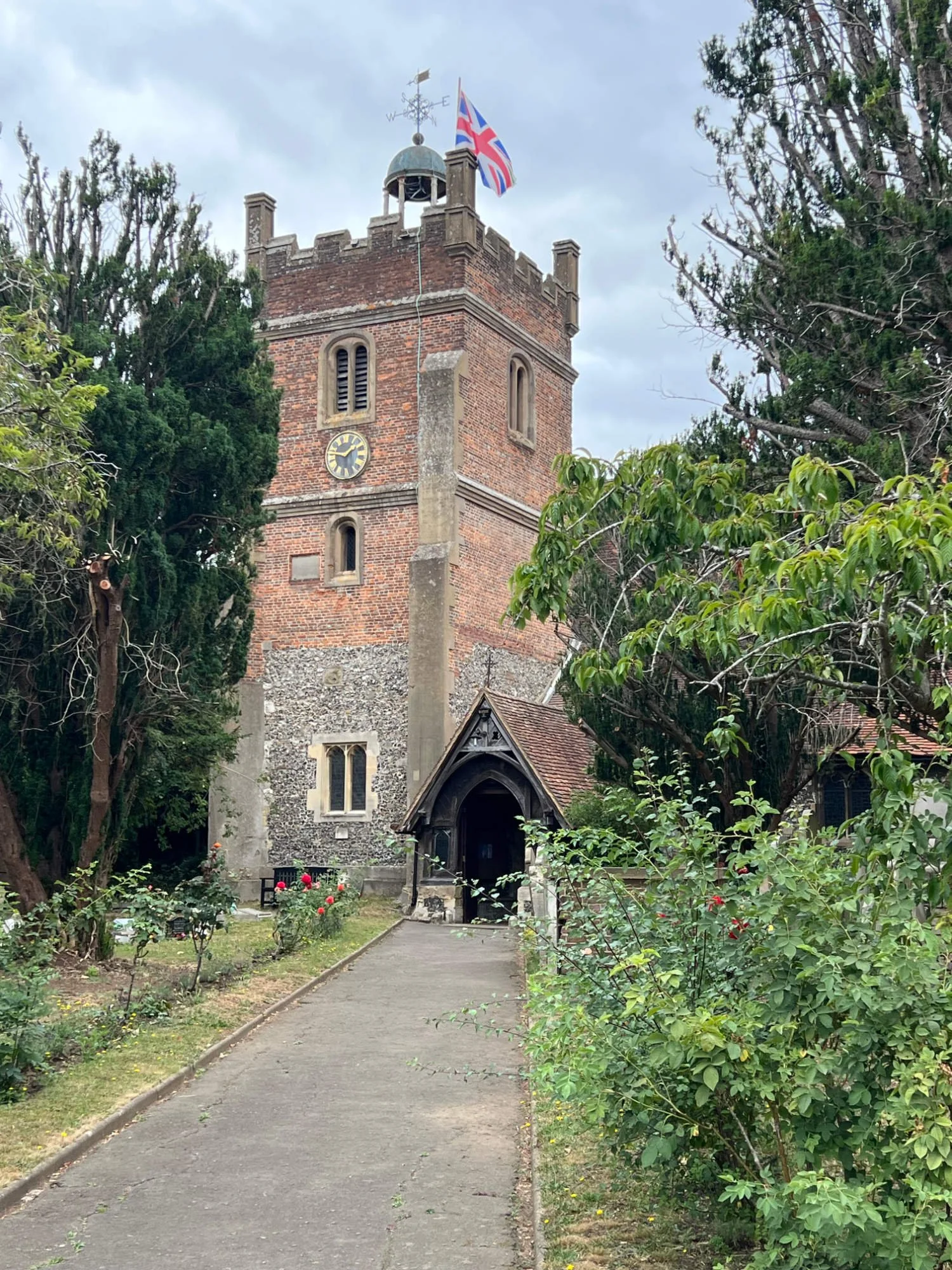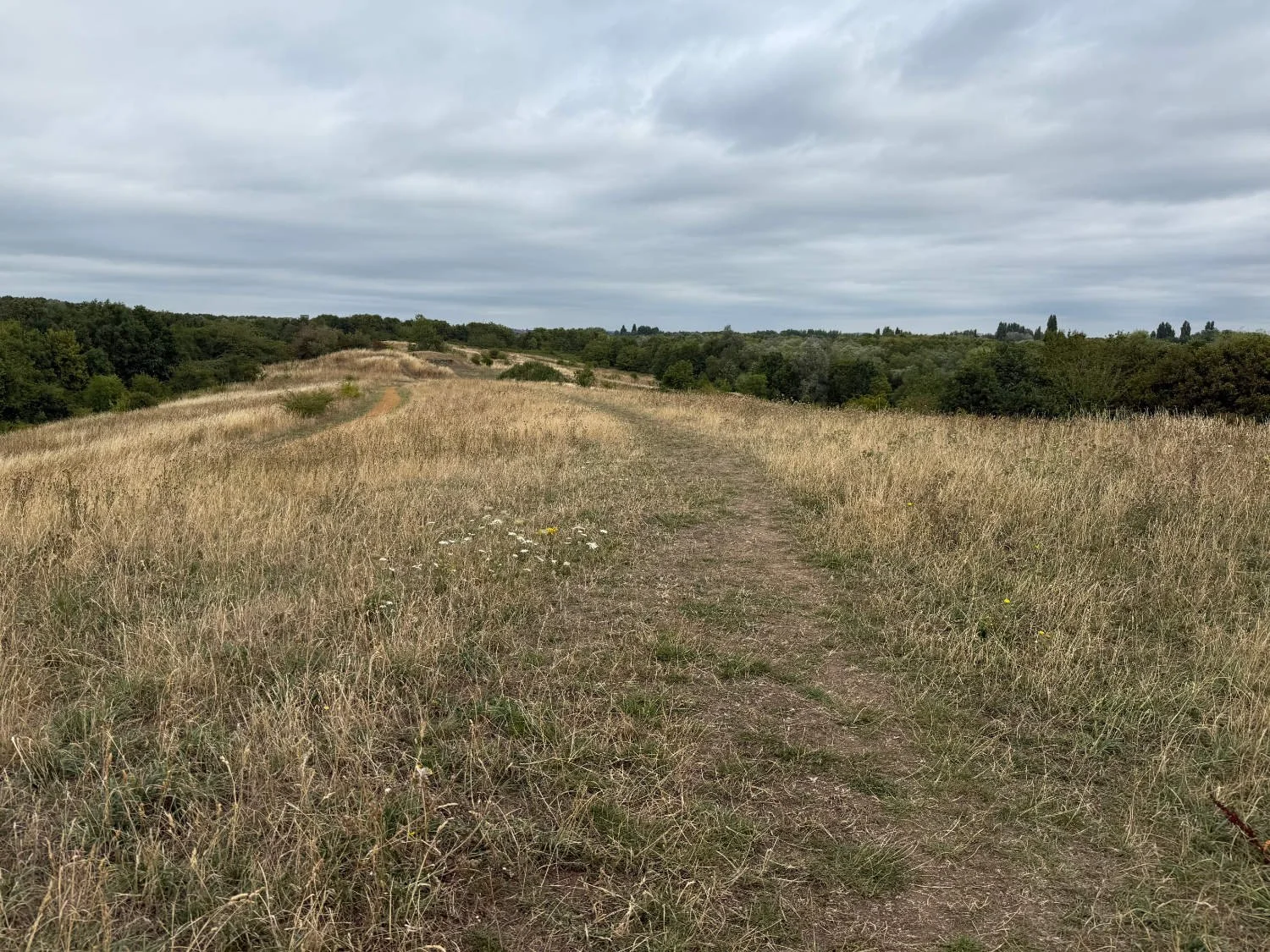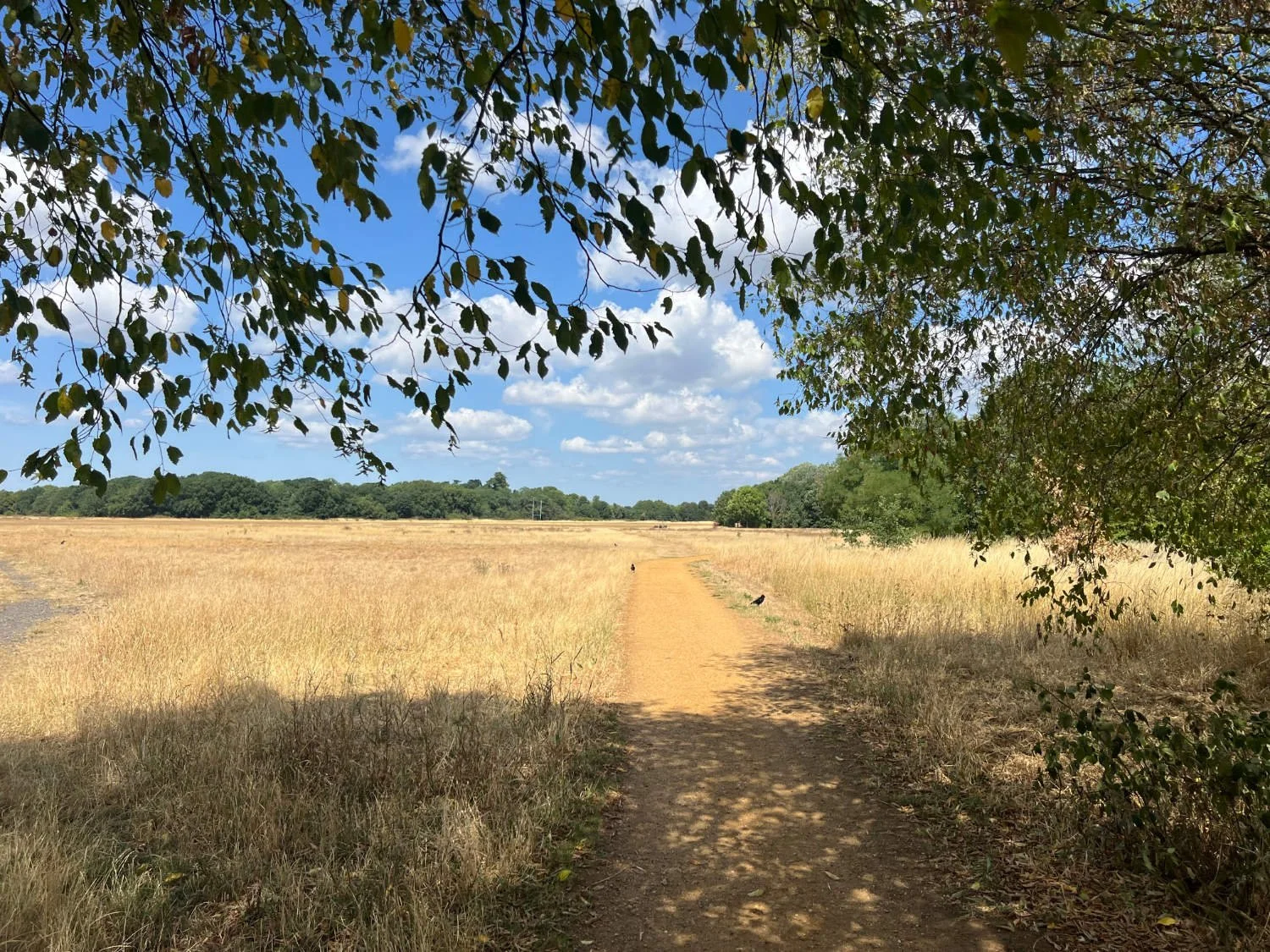47km Heathrow Express
Bedfont Lakes
Ride Overview
There are just over four and a half years to ride the route if the Prime Minister’s promise that there will be ‘spades in the ground before the start of the next decade’ is to be believed, for Harmondsworth Moor could soon be the landing strip for 276,000 planes a year rather than the gravel-riding heaven it currently is.
Harmondsworth Moor, the planned site of London Heathrow’s third runway, is one of several moors and heaths which surround the airport. Despite being little known to Londoners it is, along with the other moors and heaths surrounding the airport, one of southern England’s finest gravel areas. It’s a land of wild and neglected country, where willows wand in the wind, where finger-staining blackberries are super charged with sugars, where rivers curl and grasslands undulate like the seas. Walkers, joggers and dogs are as rare a silent plane. Monuments to the passengers and crew who fell short of the runway punctuate the moorlands as do remnants of Waterloo Bridge. Not to be missed is one of England’s finest examples of Medieval carpentry, a shot tower, gunpowder works and artful graffiti. The route is entirley within the bounds of Greater London, so there’s the ecclectic mix of abandonment, conservation, prosperity and degradation. Grafitti, one of two dull estates, dreary hotels and rogue wild plants; fennel and wild chicory, ragwort (whose native home is Sicily), Buddleia (origin China) and various fleabanes (Mexico, Mediterranean). Bullace trees, England’s only native plum, along with apple trees grown from discared seeds (jettisoned out of airplanes?) abound. And since the route circumnavigates Europe’s busiest airport, there are planes. They all but land on you at one end and skim your helmet as they take off at the other. You race them as they take off. The route might not be here for ever - although ‘informed people’ on both sides of the argument seem sure that the plans will never leave the drawing board. Enjoy it before the Prime Minster Starmer’s pledge becomes a reality.











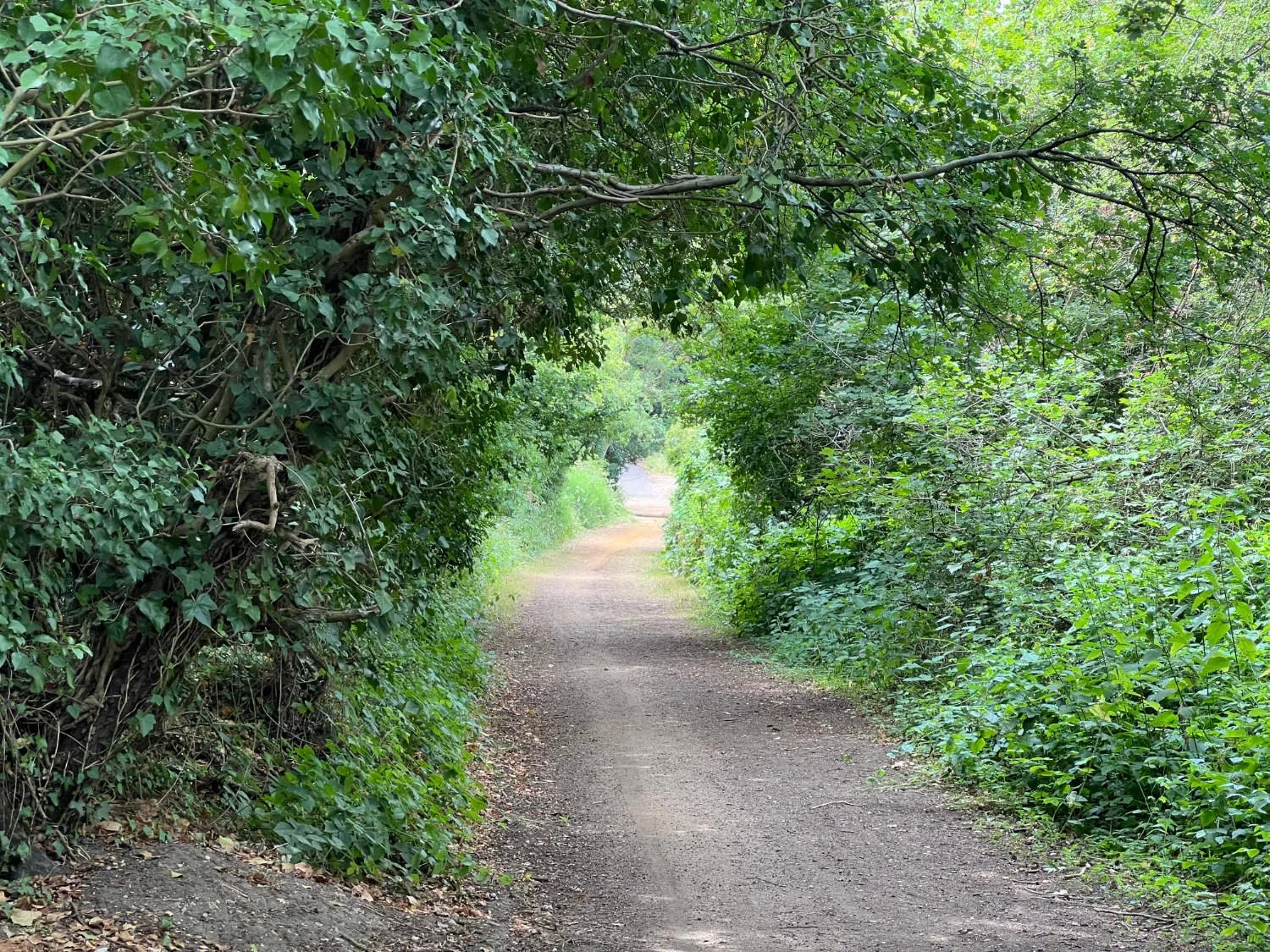
Ride Practicalities
This ride should be avoided on Twickenham match days.
DISTANCE: 47km TOTAL ASCENT:178m TERRAIN AND SURFACES: Quiet suburban roads, dedicated bike lanes and gravel paths The route is perfectly suitable for 28mm tyres. Gravel and hybrid bikes are good, mountain bikes overkill. In winter the paths remain in good condition. RECOMMENDED CAFÈS/PUBS/: Crane Nature Park, The Thirst Off All. Otherwise refreshments are somewhat scarse, unless you dive into Staines-upon-Thames, or Ashford where there are the usual chain stores NEARBY MAINLINE TRAIN SERVICES: Twickenham, Feltham, FERRY: Shepperton PLACES TO VISIT; The Shot Tower, Crane Park LINKS TO OTHER RIDES: The Arcadian Thames, The River Crane, The River Colne
Ride Notes
Head down Twickenham Rough, a former rail junction now nature park, and ride on a good path beside the River Crane. It is easy riding, flat, along a green corridor with a path wide, and in summer the air is rich with the scent of leaves, of plants, and grass. This was, for a hundred and fifty years, one of the nation’s key gunpowder manufacturing centres. You’ll pass various remnants, a pile of bricks here, a gulley there, a discarded millstone. The 25m tall Crane Shot Tower is the last in-tact survivor of London’s gunpowder golden age. Molten lead was taken to the top and poured through narrow grills to drop into a tank of water below. As it dropped, the lead cooled into round balls, some of which it is claimed were used at the battle of Waterloo. At the foot of the tower is a good mobile coffee van, The Thirst Off All.
Crane Shot Tower
After a handful of floral, riverside riding, the route takes you into the underworld. You are ‘ingorged’ into darkness, into Hades itself. On your right is a 100m of suitably dark, dripping tunnel with an uneven surface and with a miniscule light at its far end. Bring a torch, leave the bike and explore, or continue riding on the path to the left, and ride 10m of tunnel before re-emerging into the light. Above you are the huge Feltham marshalling yards, built in 1917 by German prisoners of war.
Feltham Marshalling Yards
The riverside riding through London’s rough countryside takes you to Hounslow Heath one of the finest play grounds for a gravel cyclist. There are numerous tracks and trails, all wide and fast, with a few dips and rises to add to the fun. Even at the height of summer, it seems neglected and unused, which is great for a freedom seeking cyclist. Other than entertaining cyclists, the Heath has been used by armies stationed here at various times to intimidate Londoners. James II used it for such purposes in his failed attempt to retain his crown. In 1919, the Heath was used as London’s sole aerodrome and hosted the first daily scheduled international commercial air services, including the first flight to Australia. Such is the absence of ‘No Cycling’ signs which blight London’s other heaths, and such are the tempting gravel paths which lattice the heath, that it is quite a challenge to stick to the route. Worry not should you deviate from the route; the Heath is not so vast that you’ll never find the exit. Any phone or GPS device will guide you in the right direction to rejoin the route.
The entrance to Heathrow Airport
From the heath you head up Barracks Road to the now derelict Hounslow Barracks, built in 1794 to house troops whose job it was to defend London against the threatened invasion by Napoleon. They look rather mournful now, barred and brambled. After various road crossings (using the pedestrian/cycle lights) you ride through what seems to be an abandoned industrial estate. The route weaves through concrete blocks and tyres before riding along a disused concrete road which is slowly being reclaimed by nature. After this short but gritty section, you arrive back beside the Crane, riding on duck-boards over marshy land and onto a fine gravel path. To your left is Heathrow and planes skim your helmet as they come into land.
The next section is hardly a peaceful ride despite being on one of the nation’s first cycleways (1935). As the roar of planes taking off becomes too much, the route heads into Cranford and along to Sipson. The road is quiet and straight and will form the new ‘third runway’. Across the field (where the new terminal is scheduled to be), you’ll be able to race the planes as they take off into the sky.
‘The Cathedral of Middlesex’
Peace and tranquility is restored as you begin the crossing of Harmondsworth Heath. There’s a short diversion to the Medieval Barn which Sir John Betjeman dubbed ‘The Cathedral of Middlesex’. It is one of the finest Medieval structures in the country. Adjacent is the flint and brick church of St. Mary’s. Both will have to go should the third runway ever be built. Harmondsworth Moor is a dream place for a gravel cyclist. You could spend a half day spinning along the various tracks, up and over the rises. The mapped route uses those designated for bicycles, but the other under-used paths are just as fun. The lumps and bumps are great for plane spotting - the western end of the runway is just to the end of the Heath. Pause at the poignant memorials, then when ready ride on to Stanwell Moor. There is one obstacle course to navigate - a placement of concrete blocks under the M25 to prevent joy riders testing out their stolen motorbikes on the Moor. You’ll need to clamber over them with your bike.
Heathrow’s third runway
Stanwell Moor is another Nature reserve, bordered on one side by the George VI reservoir. The path is another rarely used path. It’s fabulous riding. Circumvent Staines-Upon-Thames and neigbouring Ashford, before entering another near deserted open space (other than semi-wild horses) and continue into Bedfont Country Park, where there are yet more mazy gravel tracks, lakes and urban ‘country’. Once the private estate of the Duke of St. Albans, it supplied gravel to the city before becoming a landfill site. Since, it has become a Country Park, home to several rare species of plants and critters.
London's first airfield
After a short burst of estate riding, you arrive at the final grand open space, Hanworth Park. So far, you’ve ridden over the former estates of the Dukes of Argyll, the Earl of Bute and the Duke of St. Albans. Now you enter what was once a Royal estate; the hunting grounds of Tudor monarchs. Behind a clump of trees is a huge mansion, closed off and quietly crumbling away. More famously, Hanworth was another of London’s early airfields as well as being the centre of aircraft production including Sopwith Pups. Aston Martin built their cars here until 1956. Ride here and you are hard-pressed to believe you are in London. Not a plane, train, automobile, nor a building can be seen or heard.
The ride continues on the south bank of the Crane before re-joining the path on which you began this peerless London Gravel route. Ride through Twickenham and head to the River Thames where you’ll find a collection of waterside pubs for your post-ride pint and lunch.
All the details given on this route are given in good faith. However, situations on the ground can change, so if you know of any access issues, closures, or have any thoughts and feedback on the route, please include them in the comments section below.
Please subscribe to the website so as to be alerted to new great routes
WINNER:BEST EUROPEAN GUIDED RIDES EXPERIENCE 2025
wheremywheelsgo.uk is a Feedspot UK Cycling top 20 website


